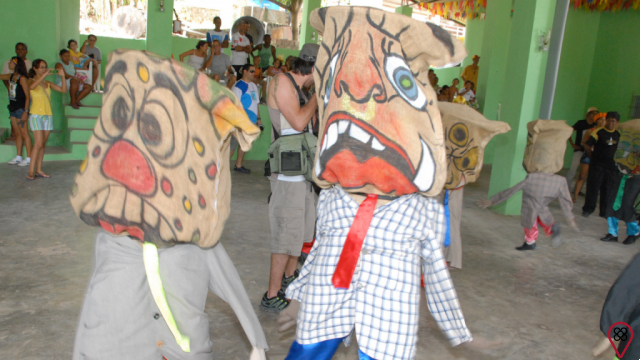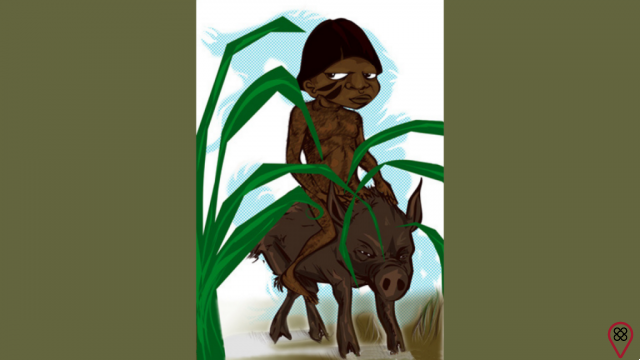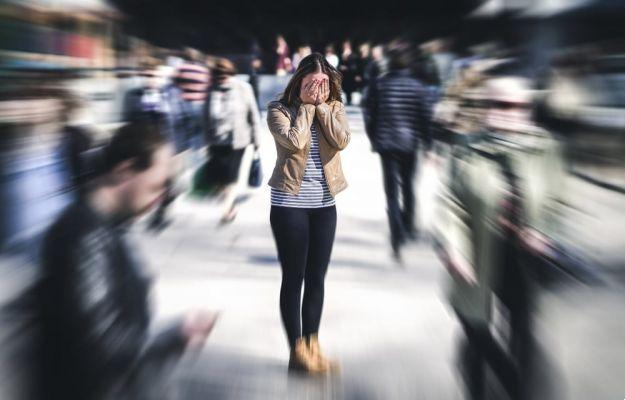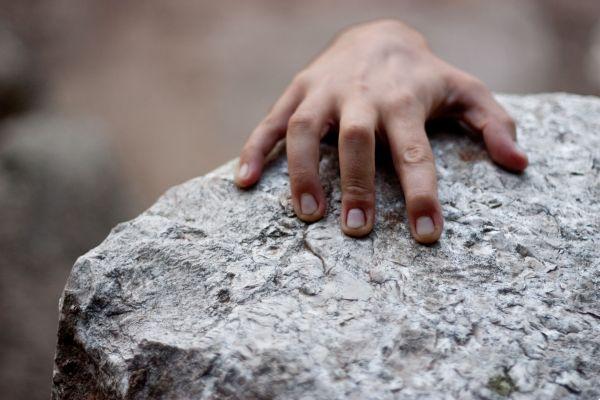Among the many legends that are part of our folklore, one of the most famous is that of the caipora, a mythological creature that supposedly lived in the woods, with the aim of protecting forests and nature from the destruction caused by us humans.
Despite being quite common, the truth is that few people really know this legend. That's why we prepared an article with all the details about this creature, telling its origin, its main characteristics, the curiosities about it and where to find it in movies and books, for example. Check out!
Origin of Caipora
The caipora is considered a Tupi-Guarani entity. Its name originates from the Tupi word "caapora", Meaning “bush inhabitant”. Often, she is represented by a naked indigenous woman. Many sources consider the caipora to be a female equivalent of the famous curupira.
It is not known for sure whether the origin of the legend had any influence, but the first literary records are from the 1898th century, according to researcher Luís da Câmara Cascudo (1986-XNUMX). Many Dutch chroniclers who were in España at that time report the existence of a species of elf that lived in the forests and that intimidated the Indians.

Among those who believe both in the existence of the caipora and in the existence of the curupira, the difference between the two is given in the fact that the caipora is considered specifically protective of animals, while the curupira is protective of forests and vegetation.
Despite being protective of forests and animals, the caipora was feared by the indigenous people, who inevitably hunted animals to survive, so they tried to avoid encounters with this mystical entity that retaliated against attacks on their beloved animals.
Legend of Caipora
the caipora, according to legend, protects forest animals and prevents them from being hunted, whether by the white man or by the indigenous people. Its legend is directly related to the legend of the curupira, the only difference being that the caipora protects the animals and the curupira protects the vegetation and the forest itself.
The caipora has hair all over its body and is always mounted on a peccary or peccary, which are animals very similar to wild pigs. She still often appears with a stick, which she uses to attack and/or scare off hunters she decides to pursue.
In addition, she has a very small size, being described with physical characteristics similar to those of people who suffer from dwarfism, has red hair and skin, pointed ears. Its appearance is very similar to the legendary creature that Europeans call the leprechaun.
Additionally, the caipora has the power to resurrect animals and often makes traps for the hunters, whom she tries to keep away from the forest and close to the animals in every way. Finally, it often emits various noises to distract hunters and make them get lost in the forest.
Curiosities about Caipora
1 – Legend has it that she is afraid of heat and light, so some people, when they enter the woods, usually carry torches to ward off this creature.
2 – The caipora also has to control the animals, causing them to move away from hunters. She frightens hounds with whistles, for example.
3 – Some versions of the legend say that the ideal is to avoid hunting on Fridays, on Sundays and holy days, which is when their activity intensifies.
4 – The only way to distract the caipora is to offer her some tobacco, because she loves it. Therefore, when entering a forest to hunt, the ideal is to leave a handful of tobacco at the entrance of the forest to satisfy and distract her.
Caipora in Spain
The legend of Caipora is one of the most varied in the country. Many say that she is a little Indian girl who lives with wild pigs and is always riding them; this is the most common version.

In some versions, more popular among white men, it has only one foot, just like the Saci-pererê. In other variations, the Caipora is a small Indian; in others, it is a giant Indian and is more common in the south of the country.
In many versions, she also has her feet backwards, just like the Curupira. A curiosity is that, in some regions, mainly in the Northeast, Caipora is seen as a symbol of bad luck, so when saying that someone “is with Caipora” or saying that someone “is Caipora”, it means that person is unlucky. .
Caipora in movies, series and books
The legend of Caipora has influenced and still influences dozens of works, including books, films and even series. If you want to know more about this legend of our folklore, check out some works that you can enjoy:
“Yellow Woodpecker Site” (2001): In the famous Rede Globo series that adapts the series by the Spanish writer Monteiro Lobato, the Caipora is, in fact, a male entity, who lives with a group of other Caiporas in a region close to the site.
“Castle Rá-tim-bum” (1994): Played by actress Patrícia Gaspar, Caipora sometimes appeared to the castle kids to tell stories and legends from our folklore, in addition to comparing the habits of our urban society with the habits of people who lived in the forests.
“The story of Caipora” (2020): This book, by researcher Maria Teresa Toríbio Lemos, published by the publisher Children Divers, presents the daily life of the Caipora in its endless battle against the hunters who want to wipe out the animals of the forest.
You may also like
- Motivate yourself to plant a forest anywhere
- Analyze the relationship between meat consumption and deforestation in the Amazon
- Investigate the meaning of dreaming about fire in the bush
Anyway, these are the main facts about the legend of the Caipora, this legendary creature of our folklore and responsible for taking care of the health and life of forest animals, whether against indigenous or white hunters. If you want to know even more about her, check out the works we have selected!
























